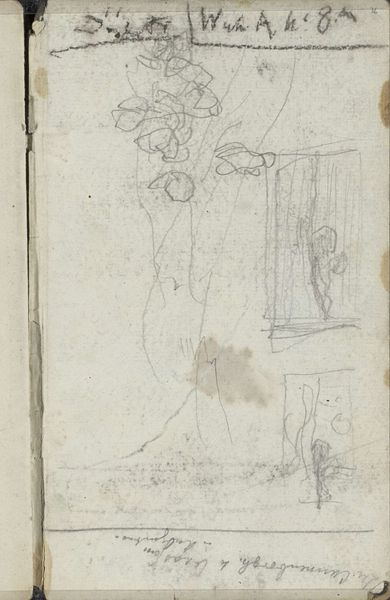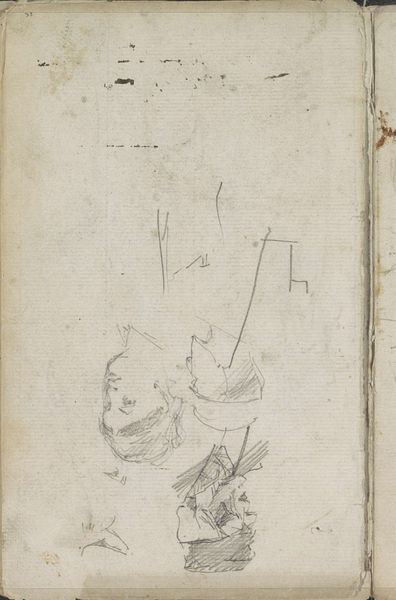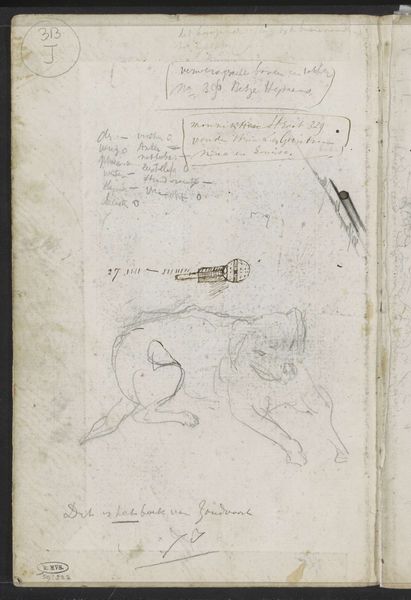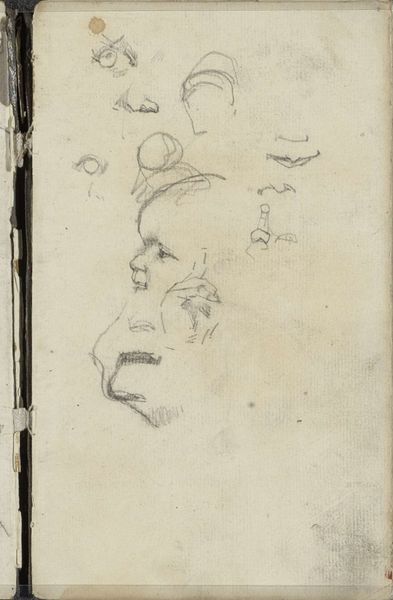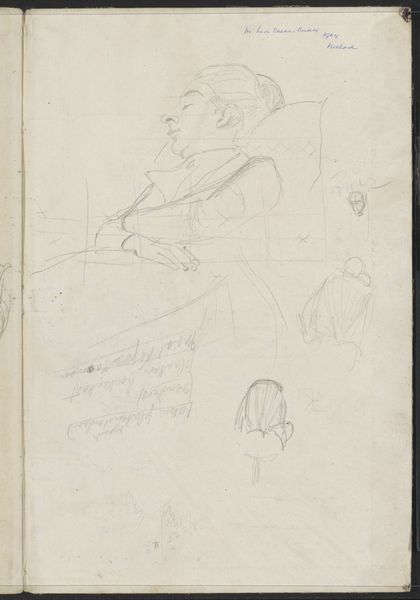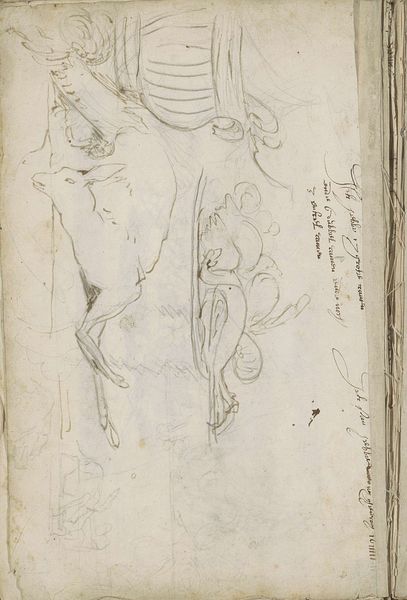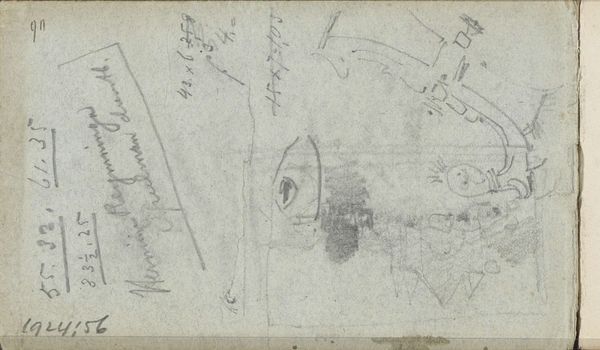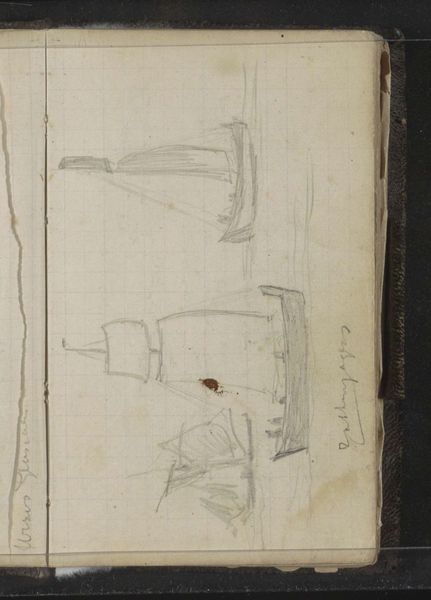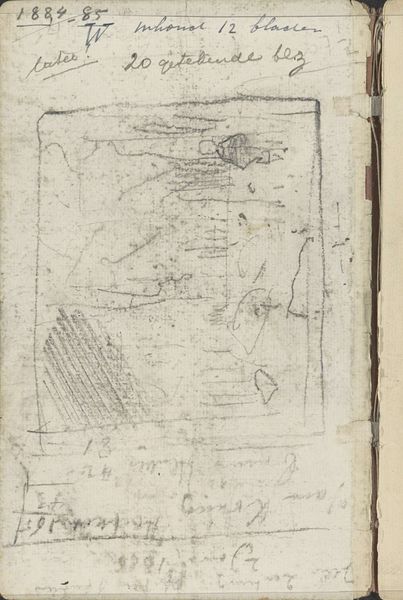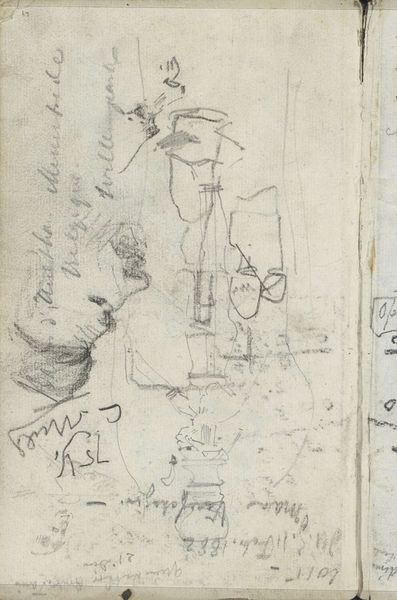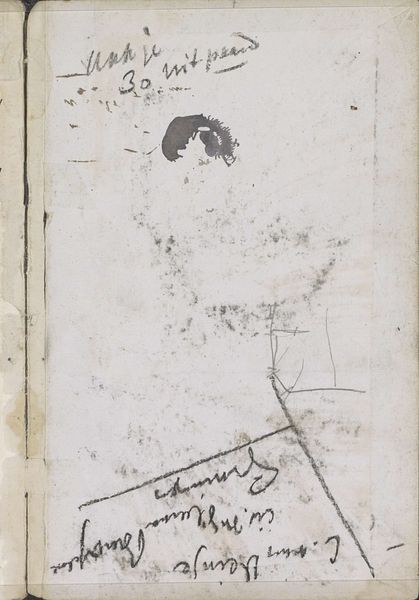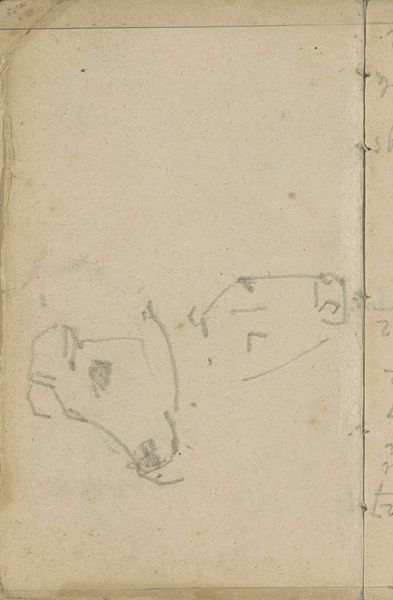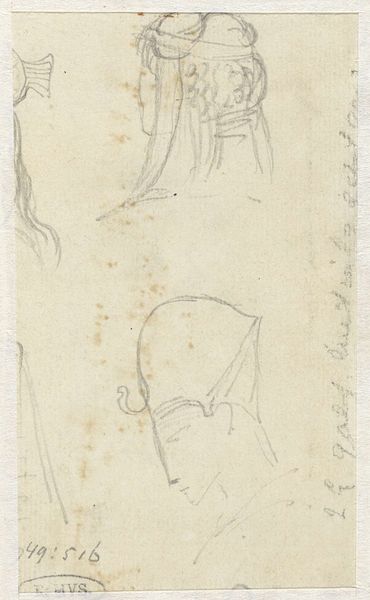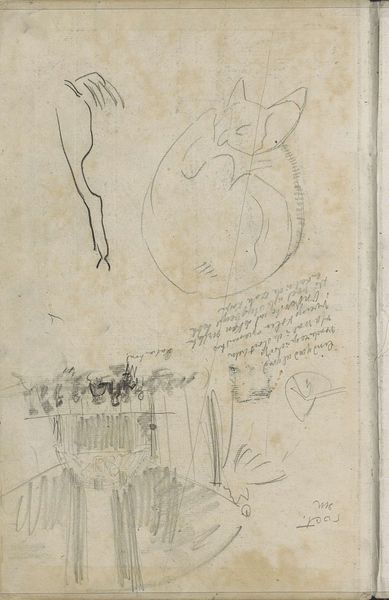
drawing, pencil
#
portrait
#
drawing
#
dutch-golden-age
#
impressionism
#
figuration
#
pencil
Copyright: Rijks Museum: Open Domain
Editor: Here we have George Hendrik Breitner's "Two Male Heads," a pencil drawing from around 1882, housed in the Rijksmuseum. It feels so spontaneous, like a glimpse into the artist's sketchbook. What do you make of it? Curator: It's crucial to consider the context. Breitner, like many Impressionists, was fascinated by modern life. These quickly rendered sketches, created with readily available and inexpensive pencils, signal a shift away from formally commissioned portraiture. Editor: So, it's not about idealizing the sitters? Curator: Precisely. It's about capturing a fleeting moment, a sense of the everyday. The visible sketch lines, the artist's process laid bare, emphasize the materiality of the work. Consider, too, how paper and pencil allowed Breitner a newfound freedom and speed of execution compared to the elaborate methods of painting. Editor: I hadn’t thought about that. Were these men important figures? Curator: That's less the point. The value lies in the act of sketching itself, the democratizing force of cheap materials, and the resulting accessibility of art production. This sketch exemplifies a modern, almost industrial approach to image-making. Breitner, in a sense, is mass-producing observations. Editor: So, by focusing on readily available materials, Breitner democratizes art making? Curator: In a way, yes. By embracing everyday materials, Breitner's practice becomes interwoven with the realities of a changing society. Editor: This has completely changed how I see this simple drawing. I was just appreciating the aesthetic qualities, but it’s much more tied to its historical and social context than I realized. Curator: Exactly, and understanding that connection reveals so much.
Comments
No comments
Be the first to comment and join the conversation on the ultimate creative platform.
